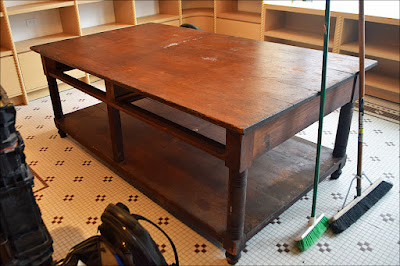 |
Fiore Marro and Pino Aprile at the
Differentiated Autonomy Conference |
Pino Aprile’s Praiseworthy and Efficacious InterventionBy Fiore Marro, President of the Comitati Due Sicilie
Translated by Charles Sant’Elia
Thanks to the invitation of the honorable Alessandro Caramiello, upon suggestion of the Comitati Due Sicilie representative in Giugliano, Campania, Espedito Basile, I was present at the meeting on differentiated autonomy which took place on 9 April 2024 in the Sala della Regina in the Montecitorio Palace [1]; the symposium was convened and organized by the honorable Caramiello himself, always attentive to the dialogue between the institutions and the territory.
It was nice to embrace again Luca Pepe the once very young meridionalista who is today a first rate journalist, who wisely moderated the conference.
The topic for in-depth analysis, differentiated autonomy, a central question in current internal politics in the nation but even more so for the future it would design for Italians should it be approved by Parliament, was detailed according to the views of profound and diverse observers.
Vice President of the Chamber of Deputies honorable Sergio Costa introduced the work, underscoring how much the system of differentiated autonomy regards the grasp itself of the Italian Republic. He further explained that there already exists an inequality between north and south, as far as for a citizen of the north the state spends 17,621 €, while for a citizen of the south 13,613 € on an annual basis, thus there is a difference in spending of about 80 billion. If the law on differentiated autonomy were approved now, these 80 billion euros would be added to the 190 billion euros which would be subtracted from the South. It is evident that it would no longer be possible to assure any type of basic service in the southern regions and thus taxes would need to be raised, but raising taxes would diminish the spending capacity of southern citizens and gradually would generate that vicious cycle that would lead to the emigration of southerners to the north, impoverishing the South of every resource, including humans.
 |
Unfurling the flag of the Kingdom of the
Two Sicilies inside Montecitorio |
The Vice President of the Chamber, formerly minister for the environment, quipped in his concluding remarks with a rather specific question: why did one want the unification of Italy if now one is doing everything to divide it? The response in our humble opinion is simple: back then one wanted Italy in order to drain the coffers of the flourishing Two Sicilies in favor of the Savoys, today one divides it because one has scraped the bottom and there is nothing left to pick clean in the South.
Subsequently honorable Caramiello took the floor, explaining he was the president of the parliamentary intergroup South Development, vulnerable areas and minor islands, which is organizing a series of events to compose and represent the south of Italy. This group is represented by 53 members of parliament of all political currents which work on common topics. Unfortunately however, today’s topic is not considered a common one, but a divisive one. The Lega Nord, in its inception, affirmed that if they didn’t reach secession they would become Romans and they are achieving that, in fact if the reform of the bill, already passed in the Senate, passes in the Chamber as well, it will be over for the South. Nonetheless there is no will for a dialogue because now that the hearings took place, when Professor Chieffi who took apart the law on autonomy line by line was heard, he received no response from Calderoli, but rather received the usual insults of the type “the Neapolitan who cries and *****”.
The presentations of the constitutional experts were touching for those who love the Italian Constitution, there was a barrage on the part of the speakers against this bill which ever more resembles an assault, they rattled off topics and quibbles, which appear can block from the start this wholly Padanian idea of turning upside down the Italian political system; the problem remains, in our humble opinion, that while here one studies the illness, the patient dies, also because those who presented this bill hold the majority in Parliament and thus can calmly proceed with their own destructionist attempt.
The one who for a time lapse, gave strength again to southern hopes on the other hand, was our dear Pino Aprile, who, in the guise of a reborn Beneventano del Bosco, loudly and with all his soul harangued a harsh criticism against those who brought forth this infamy. Important for the undersigned, was the moment in which the identitarian writer held forth the idea that the South, could indeed benefit from a potential division of the Italic territory, perhaps not immediately, but in the span of a few years.
The South of Italy was decided upon manu militari, but only for a mere question of economics and finance, and above all so as to demolish the Bourbon customs duties, paradoxically this idea of regional differentiated autonomy in our humble opinion could be a sort of return to the past, by reproposing with specific laws a sort of regional customs duty, as far as concerns the revenue of certain products of exclusive Padanian production. The solution is at hand, posterity shall judge.
Notes
[1] Montecitorio, the palace in Rome housing the Italian Chamber of Deputies, designed by Bernini and Fontana and originally built in the 17th century for Cardinal Ludovico Ludovisi, and which formerly housed the Papal law courts and city administration during the time of the Papal States. After the annexation of Rome and transfer of the capital of Italy in 1870 it was seized and used as the Chamber of Deputies.






















































